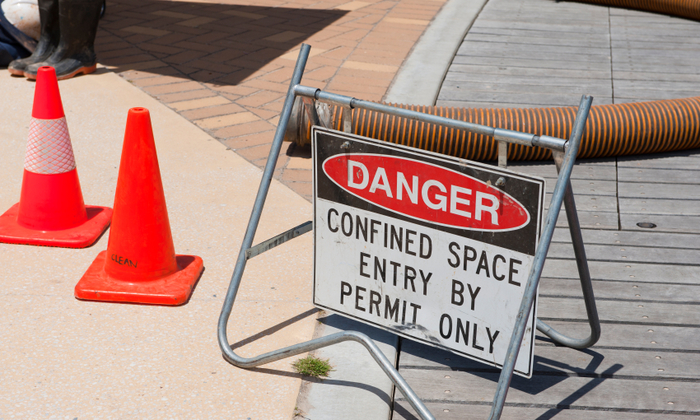Confined spaces
A confined space means any place that creates conditions that give rise to a likelihood of an accident, harm or injury due to its enclosed nature. Examples of confined spaces include: vats, tanks, pits, pipes, chimneys, cellars, silos, sewers, shafts, wells, pressure vessels and tunnels.
Risk factors in confined spaces:
- Flammable or explosive atmospheres.
- Harmful gas, fume or vapour.
- Free-flowing solid or an increasing level of liquid.
- Excess of oxygen.
- Excessively high temperature.
- The lack lack of oxygen.
Confined spaces can be found in many work environments. It could be an area that is not necessarily designed for people but is big enough for people to enter and work in. Confined spaces can also be created during construction work or modification. Very often, injuries and deaths occur as a result of work such as welding, painting, flame cutting or the use of chemicals being carried out in these areas.
The dangers of confined spaces
Confined spaces are dangerous because of their ability to kill quickly with little or no warning. Every year people are killed or seriously injured working in confined spaces. Those killed include not only the people working in confined spaces but also their potential rescuers who attempt to save them without proper training and equipment.
Confined spaces legislation
It is a legal requirement under The Confined Spaces Regulations 1997, that if your business is involved with entering, controlling or supervising people involved with confined space work, you must provide your staff with training. Failure to do so could result in prosecution.
Under The Management of Health and Safety at Work Regulations 1999 employers must carry out a suitable and sufficient assessment of the risks for all work activities to decide what measures are necessary for safety. This means identifying the hazards present, assessing the risks and determining what precautions to take.
Confined space training
It is crucial that staff who work in confined spaces are properly trained in how to identify the risks and how to use safety and protective equipment


